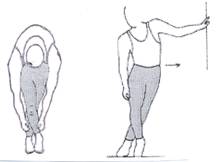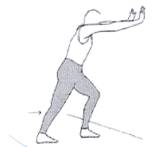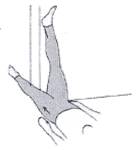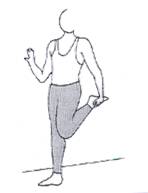

The iliotibial band is a thick fibrous band that runs from the front of the pelvis and runs down to the lateral portion of the tibia (lower leg bone). When the knee is straight the band sits at the lateral femoral condyle and when the knee is bent more than 30 degrees the band moves behind the condyle. (See Figure 1) Between the band and the bone sits a bursa (a fluid filled lubrication sac). This bursa can become inflamed with repetitive flexion and extension of the knee. The pain from the resulting inflammation and irritation of this bursa is called iliotibial band syndrome.

This condition is common in runners and cyclists. Runners most often feel symptoms while running downhill and during heel strike.
NON-SURGICAL Initial Treatment
Initial treatment includes anti-inflammatory medication, ice, stretching and strengthening of the iliotibial band, and modification of the activity that caused the problem. Physical therapy can also be very helpful.
Training can be altered by decreasing the amount, changing stride length, avoiding running on hills or stairs, and changing the side of the road or direction you run on a circular track. Cyclists may need to change the seat height or foot position.
If modification of activities, stretching and strengthening and anti-inflammatory medication is not enough a cortisone injection into the bursa can be very effective.
Follow-Up Treatment and Prevention
1. Appropriately warm-up and stretch before activities.
2. Allow for enough rest between practices and competition.
3. Maintain knee and thigh flexibility, muscle strength and fitness. (See Figure 2- 5)
4. Use proper training techniques and activity modifications such as shortened stride, avoidance of running on hills, and raised seat height.




